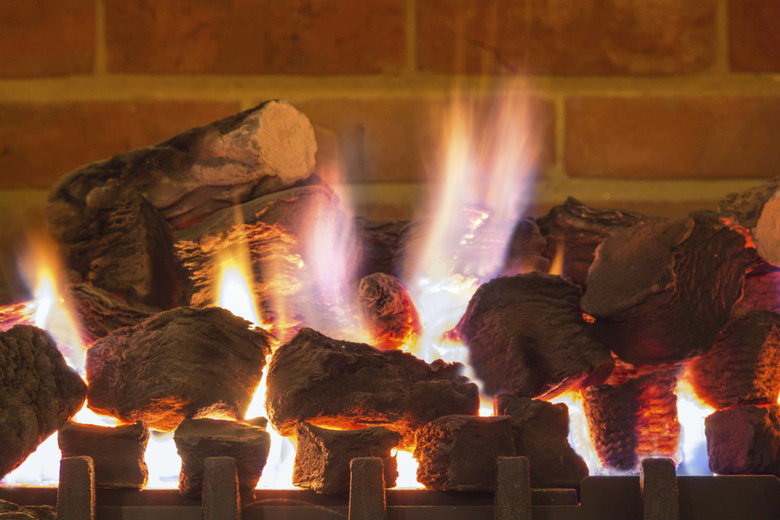Does My Gas Fireplace Need A Hearth If I Put In Hardwood Floors?
Safety codes regarding hearths, mantels and surrounds for wood-burning fireplaces are clear. And there is a good reason for that clarity; embers and sparks flying from an open flame can easily burn flooring laid too close to the firebox. Gas fireplaces, on the other hand, are less of a fire hazard and aren't governed by such strict codes. "Zero-clearance" units will not need a hearth, but other types will.
Types of Gas Fireplaces
Types of Gas Fireplaces
The flame in a gas fireplace is contained within a glass-fronted firebox in order to combine easy viewing and safety. Some gas fireplaces are only used for aesthetics and do not offer any heat output. Other models combine beauty and efficient heating capabilities. Natural-vent gas fireplaces are vented through the roof, often using an existing, wood-burning chimney. Direct-vent fireplaces are vented through a wall behind the fireplace. Vent-free gas fireplaces do not require venting and can be placed almost anywhere in your home.
Benefits of Gas Fireplaces
Benefits of Gas Fireplaces
Fueled by either natural gas or propane, gas fireplaces are clean-burning and efficient. According to the Hearth, Patio and Barbecue Association, "heater-rated" gas fireplaces offer similar heat output to a central furnace and can even be vented to channel heat to surrounding rooms. Many gas fireplaces will run during a power outage, offering a reliable source of back-up heat for your home.
Clearance to Combustibles
Clearance to Combustibles
Gas fireplaces are considered gas appliances, not true fireplaces. As such, they are not regulated by the same safety codes as wood-burning fireplaces, and each model has its own requirements. Some gas fireplaces are built with "zero-clearance" fireboxes, meaning you can put combustible materials right up to the sides, front and bottom. Not all gas fireplaces are zero-clearance, however, and some may require a hearth. Check your owner's manual for clearance specifications. If you don't have the manual, locate the fireplace model name or number and contact the manufacturer. Your retailer or installer may also be able to help you determine whether or not you need a hearth.
Safe Installation
Safe Installation
Whenever you need to move, modify or in any way alter your fireplace or the area around it, contacting your original installer, or another reputable installer, is recommended. In addition to concerns regarding combustible materials in proximity to the firebox, you may need to address other issues. Fireplaces suck air from the room where they are placed and some, like the vent-free models, can severely deplete the oxygen in a room. Before you move your fireplace, it is important to ensure the room is big enough to support it without becoming oxygen-deficient. Vent-free fireboxes can also release toxins into the air, like carbon monoxide and nitrogen dioxide, that may become problematic in small spaces.
